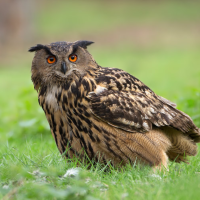Opis
One of Hamburgs biggest nature reserves lies in the north-east of the city and boasts a wide variety of habitats and lots of special wildlife. In addition to enigmatic birds such as żuraw, bielik, puchacz or dzięcioł czarny, many inconspicuous species such as strumieniówka, muchołówka żałobna or grubodziób can be found. Furthermore, the reserve boasts a huge list of mammals, including huge Red Deer and Fallow Deer (best observed in autumn), herps, rare dragonflies and butterflies, etc.
Szczegóły
Dostęp
By car: There are several parking spots around the Duvenstedter Brook, but the best spot is next to the BrookHus at Duvenstedter Triftweg 140. One can also park near Wiemerskamp (Wiemerskamper Weg 1-5) or along the Herrenhausallee (parking at intersection with Brügkamp).
By metro: Drive the subway "U1" until the last stop "Ohlstedt". Then go north for about 3km. You can already watch and listen for birds during the walk through the Wohldorfer Wald
The Duvenstedter Brook is closed to cars, so one has to either walk or go by bike. Since the distances are quite large, a bike is definitely helpful, but not all trails allow these
Teren i siedlisko
Las , Równina , Tereny podmokłe , Rzadkie drzewa i krzewy , Łąka , WrzosowiskoWarunki
Płaski , Otwarty krajobrazTrasa dookoła
TakCzy luneta będzie przydatna ?
Może być przydatnaUdany sezon obserwacyjny
Przez cały rokNajlepszy czas na wizytę
WiosnaTrasa
Droga utwardzona , Droga nieutwardzona , Szeroka ścieżkaPoziom trudności szlaku pieszego
ŁatwyDostępne
Pieszo , RowerCzatownia/platforma obserwacyjna
TakDodatkowe informacje
There's a visitor center at Duvenstedter Triftweg 140. Opening times can be found here: https://www.hamburg.de/brookhus/
Besides birding, one of the main attraction to the reserve are the rutting seasons of Red Deer (September-October) and Fallow Deer (September-November), that can be comfortably observed from the many viewing spots.
Please, dont leave the trails!



